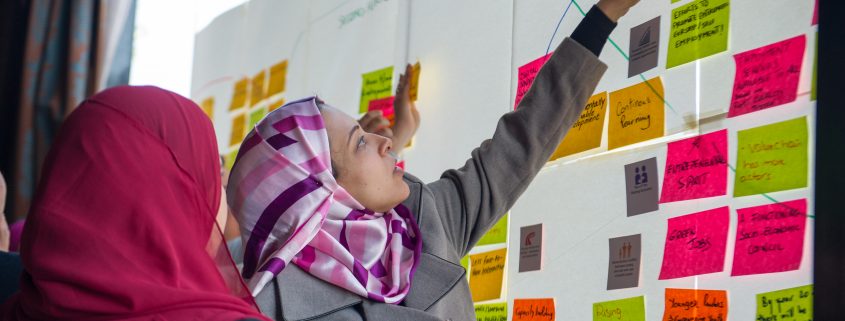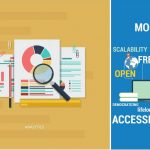How Futures Foresight informs decision-making
/In the Ancient world, Babylonian, Egyptian and Greek seers often relied on the interpretation of dreams to predict the future. While seers are no longer viewed as mystical figures connected to the divine, their vocation – that of predicting the future – is morphing into a new academic discipline that policy makers are starting to adopt and appreciate to help them analyse the past, to make sense of the present and to predict a number of possible futures. This discipline is called Futures Foresight, also known as Futures studies.
ILO Cairo Office for Business Today Magazine – Egypt, January 2017
In late 2016, the ILO Decent Work Support Team in Egypt, with support from the ITCILO and the Knowledge Management Coordination Team (ILO Geneva), organized a three-day workshop delivered by international consultants on futures foresight. The training event was a contribution to the ILO Centenary Initiative on the Future of Work, launched by the ILO Director General in 2013 and further specified in his 2015 ILC report.

In the workshop, participants engaged in fast-paced collaborative exercises to gain experience with the different tools and methods available. They explored how to structure and convey emerging visions for the future and they discussed the implications for the participants’ own organization, institution, and professional and societal contexts.
Purpose-specific futures, foresight and horizon scanning methods can help ILO staff and constituents to consider issues more deeply and to better inform a wide range of work such as: policy and programming; project formulation and implementation; and communications and advocacy. For this particular workshop, attendees chose to focus on youth employment and decent work in Egypt as a major challenge facing the ILO and constituents.
In a wider context, the study of Futures Foresight is for anyone who is confronted with a complex challenge and would like to withdraw design thinking and complex adaptive systems methods to tackle the challenge in an incremental way. Furthermore, foresight analysis is useful for any professional whose work requires collaborative decision-making for the future through understanding and generating shared agendas
To better understand the topic, we propose to discuss what futures studies are and what they are not.
Futures Foresight, what is it?
In a publication of the Hawaii Research Centre for Futures Studies, Prof. Jim Dator states that he came to “understand that there are two basic things to understand about the future, and hence about futures studies.”
“The future” cannot be “predicted” because “the future” does not exist
The aim of Futures studies is not to predict “the future”. In fact, no research studies should pretend to do so. In reality, Futures Foresight aims instead to study “ideas about the future”, or what Prof. Dator calls “images of the future“. Each individual and/or group of individuals holds images of the future that are “volatile, changing according to changing life events or perceptions”. The variety of these images is shaped by geographical biases, and demographical biases, such as gender and age.
As Dator explains “one of the main tasks of futures studies is to identify and examine the major alternative futures that exist at any given time and place”. Thus, while we would commonly talk about predicting “THE future”, the academic discipline of Futures Studies advances a more scientific and rigorous way of achieving the same goal: by forecasting “alternative futures“.
Futures studies endeavour “to facilitate individuals and groups in formulating, implementing, and re-envisioning their preferred futures”. The forecast of alternative futures and the foreseeing of preferred futures then lead to planning strategic activities, which would shape daily decisions in an organization.
“However, the process of alternative futures forecasting and preferred futures envisioning is continuously ongoing and changing”, explains Prof. Dator. For that reason, the goal of any futures exercise is not to come up with a “final solution”, but to build a guiding vision.
Any useful idea about the futures should appear to be ridiculous.
It is fascinating to watch the technological progress the world has made in the past 30 years.
“Because new technologies permit new behaviors and values, challenging old beliefs and values, much that will be characteristic of the futures is initially novel and challenging. And what typically seems at first obscene, impossible, stupid, “science fiction”, ridiculous becomes familiar and eventually “normal”.”
A very good example to illustrate this idea is the 1989 movie “Back to the future 2”, which envisioned that by 2015, we’d have a host of crazy new technologies and products. Several of the film’s predictions have indeed come to fruition such as: personal drones, mobile payment technologies and bio metric devices, hands-free Gaming Consoles, smart clothing, video phones, waste-fuelled cars, and many more.
Therefore, what is popularly considered to be the most unlikely future is often one of the most likely futures and vice versa.
Do you want to have access to our online toolkit and explore a world of possibilities with futures tools?
Visit our Foresight Toolkit page to download guides for futures tools!
Are you interested in learning more about futures foresight tools and methods?
Join us in November for our ‘Futures Foresight and Horizon Scanning’ course!
Learn to apply the most appropriate qualitative tools and methodologies for making assumptions about possible futures, drawing on foresight techniques and complexity management principles.







